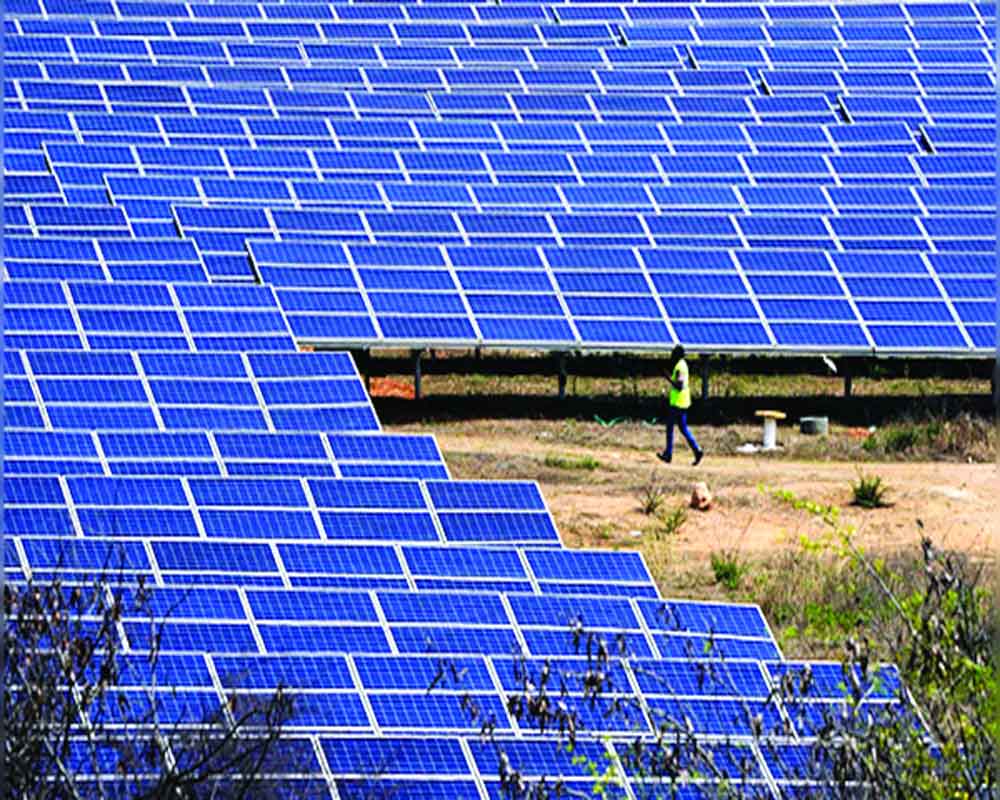The surge in global demand for renewable energy has placed solar power at the centre stage, particularly in India
India’s solar energy sector is shining brighter than ever, emerging as a goldmine for investors and entrepreneurs. The market, valued at $38 billion in 2021, is set to grow exponentially, reaching $238 billion by 2032, driven by an impressive 40 per cent compound annual growth rate (CAGR). The surge in global demand for renewable energy has placed solar power at the centre stage, particularly in India. With supportive Government policies, technological advancements and an increasing shift towards sustainability, the solar energy sector is witnessing unprecedented growth. Entrepreneurs and investors capitalise on this momentum, prioritising their goals to reap substantial benefits in the coming years.
Tech Advancements
Technological innovations are at the heart of the solar industry’s success. Commercial solar panels have gotten way better at turning sunlight into electricity, cranking up the power they can produce per square foot. The switch from polycrystalline to more advanced bifacial solar panels, which can generate power from both sides, shows how the industry is focused on squeezing out as much efficiency as possible.
In recent years, PERC (Passivated Emitter and Rear Cell) technology has been predominant in India’s solar panel market. However, due to efficiency limitations in mass production, there is a gradual shift towards more advanced technologies like TOPCon (Tunnel Oxide Passivated Contact) and HJT (Heterojunction Technology). Government Policies
The Indian Government’s policies have played a crucial role in transforming the solar energy landscape. The Production-Linked Incentive (PLI) schemes, with substantial financial allocations (PLI-I with Rs. 4,500 crores and PLI-II with Rs. 19,500 crores), are designed to boost domestic manufacturing of solar components.
Further bolstering the “Make in India” initiative, the Approved List of Models and Manufacturers (ALMM) was reinStated on April 1, 2024, ensuring quality control and encouraging the use of domestically manufactured modules. Various projects by the Ministry of New and Renewable Energy (MNRE), such as the CPSU Scheme Phase-II, PM-KUSUM Component B and the Grid-connected Rooftop Solar Programme Phase-II, mandate the use of Domestic Content Requirement (DCR) solar panels, providing subsidies to promote the adoption of solar energy.
Environmental Impact
The solar industry in India isn’t just about fulfilling energy requirements - it’s also helping the environment. By using more solar power and relying less on fossil fuels, the solar industry is assisting in eliminating greenhouse gas emissions and fighting climate change. Shifting towards renewable energy, like solar power, is super crucial for India’s climate goals and ensuring a sustainable future.
Market Potential and Investment Opportunities
India’s solar energy market presents a plethora of opportunities for investors and entrepreneurs. The sector’s rapid growth and the increasing acceptance of solar power for both commercial and personal uses underscore its potential. With Government support and ongoing technological advancements, the barriers to entry are diminishing, making it an attractive proposition for new ventures.
Besides, technological advancements enhance efficiency and reduce costs, increasing profitability. Entrepreneurs can explore various segments within the industry.
On a larger front, the global shift towards sustainability ensures a steady demand for solar energy solutions, providing businesses with a long-term growth trajectory. Moreover, India’s solar industry’s robust market potential, Government support and technological innovation make it a compelling opportunity for those looking to invest or start a venture in renewable energy.
(The writer is the CEO, of Gautam Solar, views are personal)


























